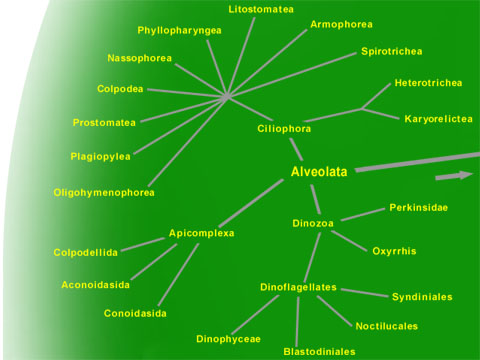Domain Eukaryota
|
 |
All Alveolata have (and derive their name from) a cellular feature called the cortical alveoli. These are tiny flattened 'bubbles' fused into a continuous layer that encompasses the cell, underlying and supporting the cell membrane. The cortical alveoli often form a flexible 'skin' or pellicle and can sometimes produce armor plates. Alveolates have cilia hairs (or distinctly structured flagella). They have tubular mitochondria. Like the other Chromalveolata kingdoms, many Alveolates have photosynthesizing chloroplasts apparently acquired from an absorbed symbiotic alga. However, only the relatively 'advanced' groups have these, which once raised questions about Alveolate classification. But the similarities between the three main groups of Alveolata, first noticed some years ago, has now been confirmed by genetic studies. It appears that the Dinozoa and Apicomplexa are more closely related to each other than to the Ciliophora. Both have chloroplasts and distinctive bundles of microtubules used for eating.
|